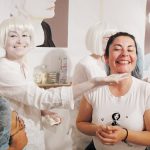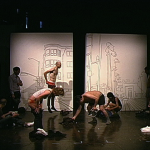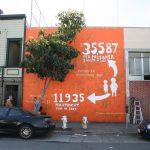



SYSTEMS FOR CRITICAL SOCIAL ENGAGEMENT and REAL TIME ACTIONS
As a multidisciplinary artist, I work with an urgency to create socially engaged art. This need was born from a seminal and devastating event in my life: In 1995 my brother was sentenced to life in prison. Beyond the familial tragedy and personal commitment to biweekly visits to a maximum-security facility, I became deeply involved in prison abolition education and volunteered at the Prison Activist Resource Center. I began to imagine creating art that could change society and was encouraged by the prison activists to actualize these ideas. From this supposition, I created my first multidisciplinary art event, which attracted artists, activists and scholars committed to dissecting the prison industrial complex. Since then, I have been preoccupied with the idea that relational experiences can connect us to a reality beyond our immediate existence. With a necessity to communicate—both in the literal and abstract sense—I strive to create meaningful situations that can be conveyed through tactical objects, participatory processes and real-time actions.
For the past years, I have produced a series of works by creating “tactical situations” that explore social issues about migration, gentrification, incarceration and race. These situations have meant to deliver similar experiences to play, chance, plot, role-play, and social networking. Much of this work has been done in collaboration with friends, audiences and colleagues. Participants and creators become involved in temporary illusions that appear to be literal, critical and conceptual. For example, “Hunting the Now” is a game (17” x 11” inches offset double-sided print), I created in collaboration with art therapist Fiona Glass and radical historian Chris Carlson, under the alias The Counter Narrative Society. The piece was a bilingual treasure hunt that humorously engaged artists and audiences to reflect on the fading history of two parallel streets impacted by gentrification and migration. As we distributed the game containing 15 destinations, participants were given a disposable camera to capture their own impressions. A participant from the game wrote in her blog: “When we took pictures of the future condominiums that will stand on Mission and 18th, we tried to capture the way the bare pipes and scaffolding made the construction site look like a prison.”
Heavily influenced by anti-art, conceptual art and anti-oppression movements, the general goal of my art making is to develop systems of critical social engagement and real-time actions to address ethical-social dilemmas. Here are two theoretical art contexts I enjoy exploring and will be further investigating in my graduate work at MIT’s Visual Arts Program (VAP):
The first is to develop projects that function as the “Critical Artist” in the development of “Inter-Human Aesthetics” – an idea that is deeply influenced by Joseph Beuys, Ligia Clark, Guillermo Gomez-Peña and Nicolas Bourriaud who have coined the following concepts: 1) The artist’s role as a social engineer in the production of “social-sculptures”; 2) The object as visual device which “dissolves into an awareness of the body”; 3) The body as a site in lieu of “border-crossing”; 4) The methods for social engagements as “relational aesthetics”.
With the second context I investigate the inter-human relations and real time actions as a “make – believe world”. Catherine Bates’ distinctions between how the Theorist of Play differs from the playwright in their intention to create “man-made illusions of the play-world” are essential in creating these works. To Bates, the theorist of play is so conscious of the implications of her actions that she finds herself “discovering that everything – including [her] own claim to credibility – is a game.” The playwright, on the contrary, “fashions plots, constructs myths, and lures players, readers and spectators into a world that neither conceals its illusoriness nor seek to propose that there is anything behind or beyond.” In this sense, I see my work and my body functioning both as the theorist of play and the playwright in the construction of tactical situations.
Working from these frameworks, I originate situations as systems that have taken the shape of:
• Objects and Designs as functional tools for tactical expression
• The whole-body as performers, altered identities and game players
• Installations and Public Interventions as spaces for social engagement
Changing society takes more than one person’s desire and effort, likewise it requires a great deal of public participation to create tactical situations that address specific social issues. Yet, these works when properly deployed, may be transformative to individuals, whose actions might otherwise be eclipsed by group actions.
Mabel Negrete © 2009 – [With editing contributions by: Mark Almanza, Lauren Elder and Ann Schnake]